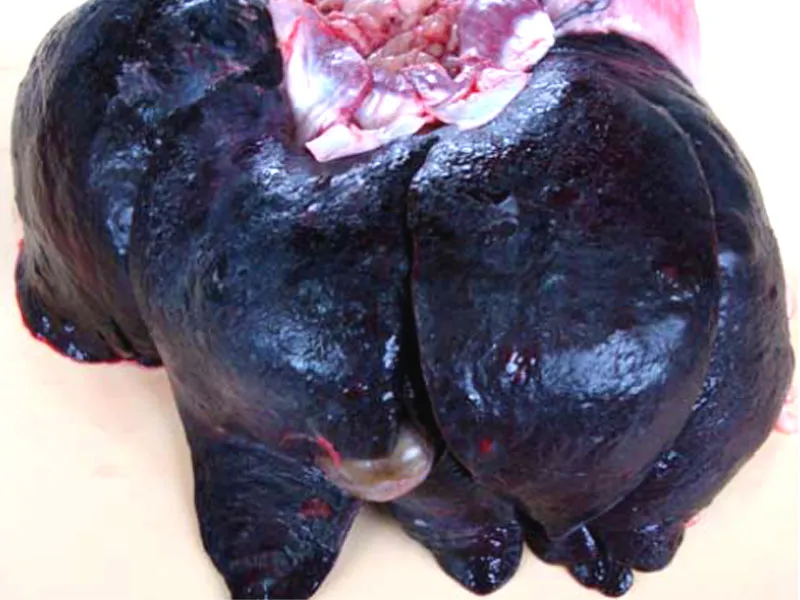Deaths of Cows During Long Distance Transportation to the Slaughterhouse.
Changes on Histopathological Examination, Muscle and Liver Glycogen Storage and Muscle pH
DOI:
https://doi.org/10.24070/bjvp.1983-0246.007002Keywords:
hypovolemic shock, glycogen and pH changes, stress, transportation, cattleAbstract
The present experiment aimed to perform histopathological, muscle and liver glycogen and muscle pH analyses of cows dead during transportation, and submitted to necropsy in slaughterhouses inspected by Federal Agencies, in Araguaína – TO, Brazil, from January to July 2013. Six affected animals dead during transportation and submitted to necropsy constituted the Experimental Group (EG); a Control Group (CG), was composed by 6 cows slaughtered ordinarily following the slaughter flow. Gross and histopathological evaluations were accomplished only on EG. The main gross lesions observed at necropsy were extensive subcutaneous and muscle hemorrhage and hematomas, interstitial (83.3% of cases) and alveolar (66.6% of cases) lung emphysema, lung congestion (66.6% of cases) and edema (16.6% of cases), kidney (83.3% of cases) and liver congestion (16.6% of cases). On histopathological evaluation, the lungs showed interstitial (100% of cases) and alveolar emphysema (66.6% of cases), congestion (66.6% of cases), edema (16.6% of cases) and blood aspiration (16.6% of cases). Renal congestion (83.3% of cases), hyaline casts (50% of cases) and tubular degeneration were the kidneys changes (16.6% of cases). Rarefaction of the white pulp (66.6% of cases), red pulp (66.6% of cases) and hemosiderin (16.6% of cases) were detected on spleen. The hepatocytes showed turve and finely vacuolyzed cytoplasm (lace-like aspect) possibly caused by a reduction on glycogen (50% of cases) and congestion (16.6% of cases). Autholysis was observed on 50% of the livers and 16.6% of the spleens and kidneys. The animals from the EG presented higher mean of degenerate muscle fibers. The intercostal muscle was more affected when compared with other muscles on the same group. Muscle pH values were higher on EG than on CG. Differently, glycogen average values were similar between groups (EG 58.97 μmol/g and CG 57.05 μmol/g). The results obtained in the present study allow to confirm that the cows, transported through long distances, and exposed to intense stress and water and food deprivation, show an homeostasis fall. Thus, stress and time of transportation affect glycogen concentrations and muscle pH. Bruises caused miofibrillar degeneration and hemorrhages that, when associated with loss of fluids through dehydration, lead to a clinical picture of hypovolemic shock evidenced by irreversible gross and microscopic changes causing death.


